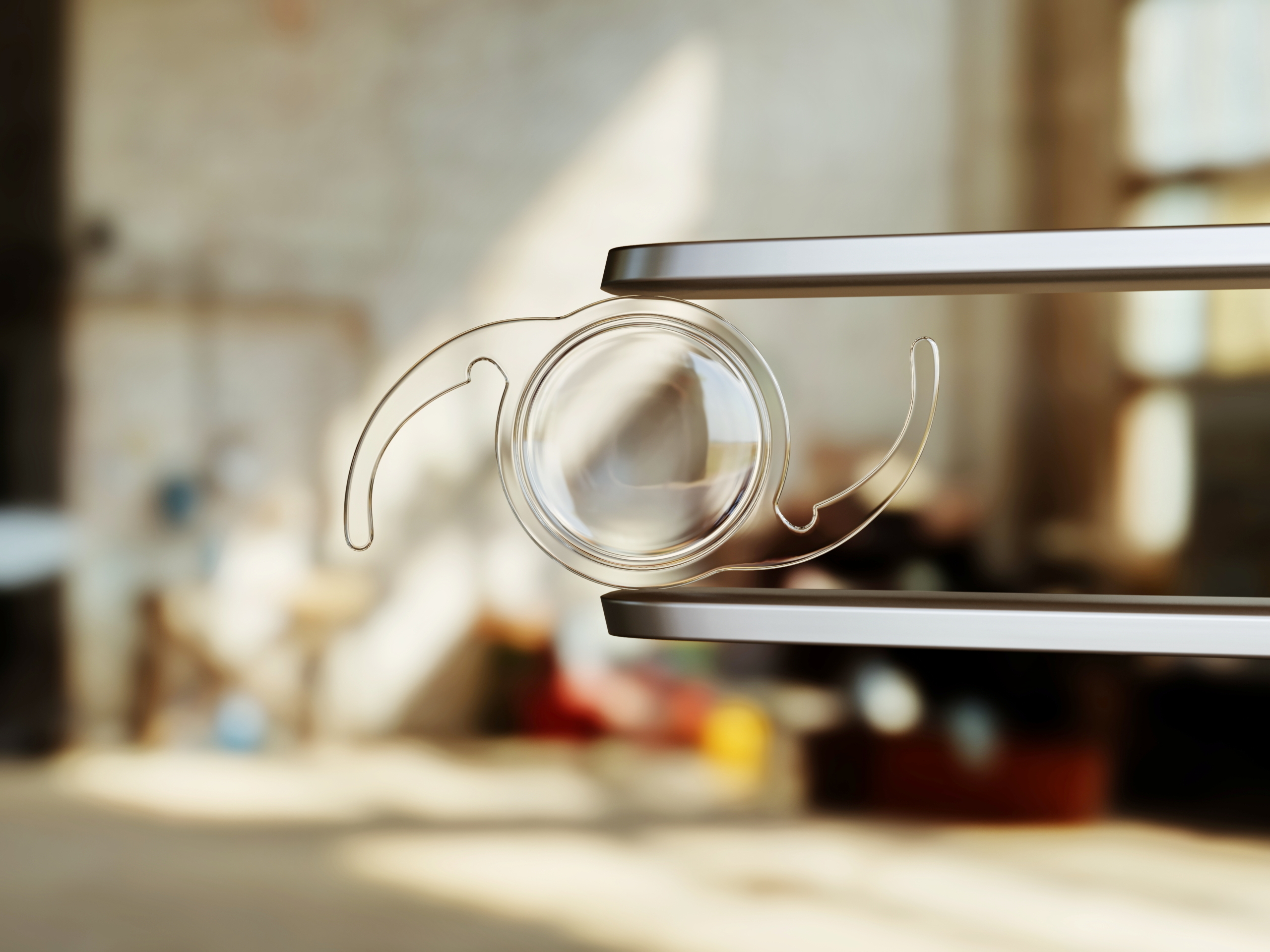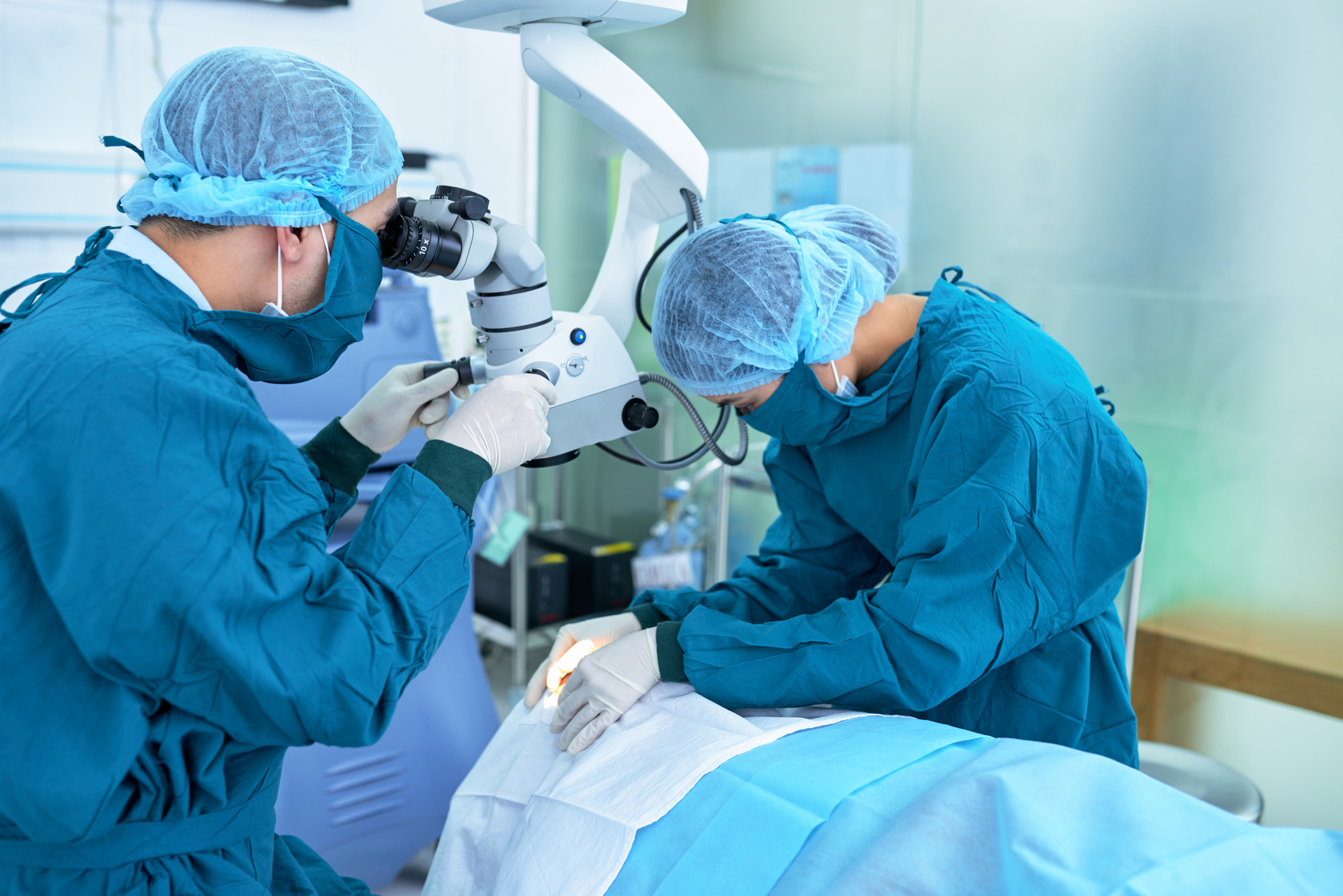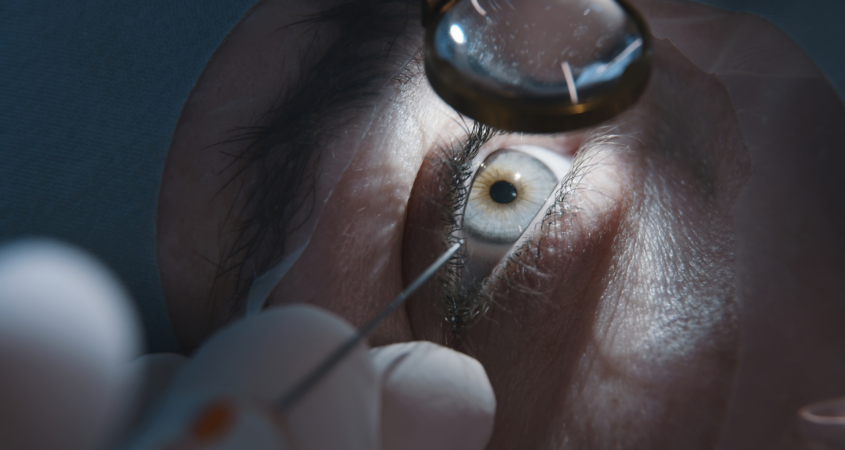Does Cataract Surgery Correct Vision?
The Short Answer: Cataract surgery can correct vision by replacing your eye’s natural lens with an artificial intraocular lens. Modern cataract surgery offers various premium IOL options that can improve both your cataract-related vision problems and other vision issues like nearsightedness or farsightedness.
While the quick answer is yes, there’s more to the story. From how cataracts affect your sight to the types of surgeries and lenses available, understanding your options can help you make the best decision for your eyes and lifestyle. Keep reading to get a full picture of what cataract surgery involves—and how it can restore your clarity.
Understanding Cataracts and Vision Impact
What Are Cataracts?
A cataract occurs when the eye’s natural lens, which normally focuses light onto the retina for clear vision, becomes cloudy. This cloudiness happens when proteins in the lens begin to break down and change their structure, blocking light from passing properly through the eye. The result is like looking through a foggy window, making daily life activities more difficult.
People with vision problems from cataracts often notice their vision becoming increasingly blurry over time. Common signs include:
- Frequent changes in glasses prescription
- Seeing halos around bright lights, especially while driving at night
- Increased glare sensitivity
- Difficulty reading in dim lighting
- Colors appearing faded or yellowish
Causes and Risk Factors
Age stands as the leading cause of cataracts, with most older adults developing them as a natural part of getting older. While some people may notice changes in their 50s, cataract surgery becomes most common for those in their 70s.
According to the National Eye Institute, several other factors can increase your risk of developing cataracts:
- Extended exposure to UV light and sunlight
- Eye injuries or trauma
- Use of certain medications, particularly steroids
- Medical conditions like diabetes
- Some people are born with cataracts, though this is rare
Surgery becomes necessary when cataracts begin to interfere with daily activities and quality of life. This typically happens when updating your glasses prescription no longer helps improve your vision, or when vision changes occur rapidly within a year. At this point, the only effective treatment is surgical removal of the clouded lens and replacement with an artificial intraocular lens.
Types of Cataract Surgery
Traditional Surgery
Technology Overview:
- Uses phacoemulsification (ultrasound technology)
Key Steps:
- Eye surgeon makes a tiny incision in the eye
- Ultrasound breaks up the clouded lens into small pieces
- Lens fragments are carefully removed through the incision
- Artificial intraocular lens (IOL) is placed into the lens capsule
Key Benefits:
- Remains one of the most frequently performed surgical procedures worldwide
- Well-established procedure with extensive safety record
- Effective removal of cataracts to improve vision
- Compatible with various types of intraocular lenses
- Covered by most insurance plans
Patient Considerations:
- Outpatient procedure typically takes about 15-20 minutes
- Patients return home the same day
- Vision improvement is noticeable by the next day
- Complete healing takes about a month while using prescribed eye drops

Laser-Assisted Surgery
Technology Overview:
- Uses femtosecond laser (produces ultra-quick pulses in trillionths of a second)
- Replaces several steps traditionally performed by hand
Key Benefits:
- Creates precise incisions
- Softens the cataract for easier removal
- Provides accuracy for premium IOL placement (multifocal or extended depth of focus lenses)
- Can correct astigmatism during the procedure with precise corneal incisions
Patient Considerations:
- Not required for all patients
- Often recommended for those choosing premium lenses
- Beneficial for certain eye conditions
- Recovery timeline similar to traditional surgery
- May provide more predictable results for specific cases
Both surgical options are safe and effective. The choice between them often depends on factors like:
-
- Lens choice
- Presence of astigmatism
- Insurance coverage.
As with any medical procedure, your eye doctor will help determine which approach best suits your specific needs and vision goals.
Lens Options and Vision Correction
Every type of cataract surgery involves replacing your cloudy natural lens with an artificial intraocular lens (IOL). There are several IOL options available, each offering different benefits depending on your lifestyle, vision needs, and budget. Understanding these options will help you make an informed decision with your ophthalmologist about which lens is right for you.

Standard Monofocal Lenses
Monofocal IOLs:
Monofocal lenses represent the most common choice in cataract surgery. These artificial intraocular lenses focus light at one specific distance, typically set for clear distance vision. Patients can select whether they want their vision optimized for distance, medium-range, or close-up activities. Most people opt for distance vision correction and use reading glasses for close work.
Two Different Monofocal Lens Types:
For those interested in a different approach, monovision setup allows one eye to focus on distant objects while the other handles near vision, though this arrangement isn’t suitable for everyone.
Advanced Lens Options
Modern cataract surgery offers several sophisticated lens choices.
Light Adjustable Lenses (Latest Technology)
The Light Adjustable Lens (LAL) is a type of intraocular lens, or IOL, that is used to replace your natural lens during cataract surgery. It is the only IOL available that is customizable after cataract surgery. These lenses are made of a photosensitive material that can be changed after cataract surgery to optimize your vision.
Multifocal Lenses:
Multifocal lenses contain multiple focusing zones, similar to bifocal glasses, allowing clear vision at various distances. While these premium IOLs might eliminate the need for glasses completely, some patients notice halos or bright lights.
Extended Depth of Focus Lenses:
Extended depth of focus (EDOF) lenses provide a single, stretched focusing zone for better distance and intermediate vision, with fewer visual disturbances than multifocal options. For patients with astigmatism, toric lenses offer built-in correction and work with any lens platform.
Expected Outcomes
- Most patients notice vision improvement by the day after surgery
- The eye needs about a month to heal fully, with eye drops helping prevent infection and support healing
- Initial mild irritation or itching typically subsides after the first night
- Patients can usually return to work within two days
- Heavy lifting or bending should be avoided during recovery
- Final vision results depend on the chosen lens type:
- Monofocal lens users often need reading glasses
- Advanced lens options may reduce or eliminate dependence on glasses
Having realistic expectations about your selected lens type helps ensure satisfaction with the results.

Recovery and Long-term Results
Immediate Post-Surgery Period
The first 24-48 hours after cataract surgery are mild and straightforward for most cataract patients. Most people notice some itching or light irritation during the first night, but the outpatient procedure causes minimal discomfort. You’ll wear a protective shield over your eye for the first day, then only at night for a week afterward.
Your eye doctor will give you specific instructions about eye drops, which you’ll need to use for about a month to help with healing and prevent infection. During this initial period, you should avoid heavy lifting or bending down. Most people can return to daily life within one or two days, though you’ll need to stick to light activities.
Vision Stabilization
Vision improvement often begins the day after surgery. While many patients see better almost immediately, your vision may be blurry vision and fluctuate for several days as your eye heals. Full vision stabilization typically occurs within a few weeks, though this can vary among patients.
Your eye doctor will schedule follow-up appointments to monitor your healing and vision progress. The first check-up usually happens the day after surgery, with additional visits during the first month. These visits help make sure your eye is healing properly and your new lens is functioning as intended.
Long-term Benefits
Once your eye fully heals, you can expect clear vision that remains stable. Many patients report better vision than they had before their cloudy lens developed. Your artificial lens won’t develop cataracts and should last for the rest of your life.
The improvements in daily life can be remarkable. Activities are made easier, including:
- Driving (especially at night)
- Reading
- Watching TV
- Using digital devices
Many patients find they need fewer vision aids than before surgery. Depending on the type of intraocular lens chosen, some people can reduce or eliminate their dependence on glasses, though reading glasses might still be needed for close-up tasks.
Conclusion

Modern cataract surgery is a remarkable advancement that does much more than just remove cloudy lenses. Today’s surgical options can meaningfully correct vision through precise techniques and premium IOLs. The procedure allows most cataract patients to see more clearly within days, with options ranging from monofocal lenses to advanced multifocal lenses that can reduce dependence on glasses.
When considering cataract surgery, consider:
- Your lifestyle needs
- Your specific vision goals
- Solutions available for:
- Distance vision (driving)
- Reading vision
- Astigmatism correction
At Visionary Eye Doctors, we understand that choosing the right cataract surgery option is an important decision. Our experienced eye surgeons combine advanced technology with personalized care to help you achieve the best possible vision outcomes. Ready to learn if cataract surgery is right for you? Contact us today to schedule a consultation and discover how we can help restore your clear vision.



